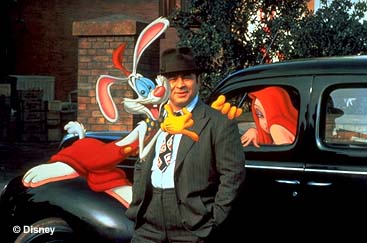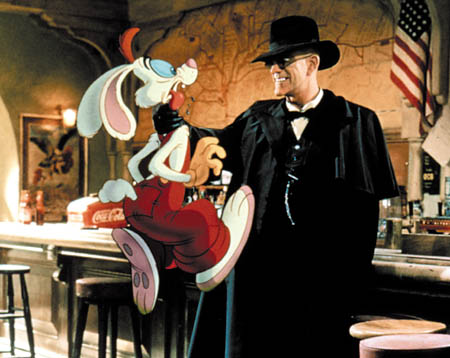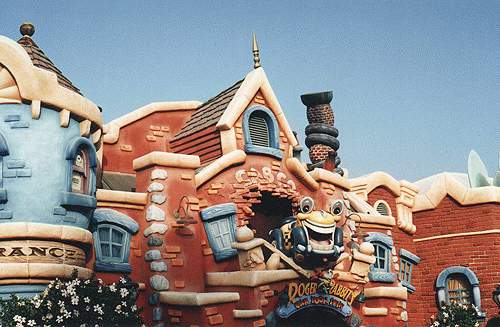Starting the Discussion
Back to
the Theaters--with a Difference: Who Framed Roger Rabbit?

Klein,
pp. 200-205
- Most of Klein's chapter
focuses on the ways in which Roger Rabbit uses both US history and
cartoon history to construct a nostalgic experience for its viewers. In what
sense was "something vital at stake in 1947--a matter of life and death"?
- What's the metaphoric
significance of dip, both in terms of post-war America and in terms of the
cartoon industry?
- What contrasts is Klein
able to find between history according to the movie and history according
to the historians in the immediate post-war period in Los Angeles (and other
major US cities)?
- "No commercial film
I know records as clearly the way cartoons died (and why they remain important
as part of our collective cultural memory)," Klein concludes. Have cartoons
really died--and why might they remain important in cultural memory?
- As you watch the film,
try to jot down a couple of instances in which the animators are evoking episodes
and motifs from classic cartoons/
- Klein sees the animation
in Roger Rabbit as more modern than classic in style. Based on your
viewing, is he right?
- The basic shape of the
movie is determined not only by the references to 30s and 40s animation, but
also by the characteristic lighting and style of the live action film noir
movies made during the 40s and early 50s. What impact does it have to juxtapose
the anarchic world of the Toons with the dark vision of the world embodied
by Eddy Valiant?

- Critics of the film have
split over the effectiveness of the toon/coon parallel so clearly indicated
in the film's references to Toons as a race apart, living in a technicolor
ghetto. Was there a cultural critique here or is this element just a scattershot
approach to meaning in the film?
- This movie was shot in
approximately a year, but it then took a staff of 320 animators another year
(and over two million drawings) to achieve the depth, solidity and realistic
interaction between cartoon and live actors we see in the completed film.
Over one thousand composited shots were needed. Some people find the technical
mastery simply dazzling; others see it as a technological achievement without
a heart. What do you think?
- One recurring theme in
the film is the importance of laughter. How does that play out?
- How does the pun on "framed"
in the title work for you?
- According to the director,
Robert Zemeckis, Roger has "a Disney body, a Warner's head, and a Tex
Avery attitude." Explain.
- Critic Jonathan Rosenbaum,
in a 1988 review of the film, observes, "What this movie shares with
the other Spielberg/Lucas blockbusters of the Reagan era, for better and for
worse, is an inability to view history as anything other than a reflection
of film history (rather than the other way around)--which is as succinct an
expression of the Reagan legacy as I can think of." You've seen a lot
of Spielberg and Lucas films, I'm sure. Is this a fair criticism?
- Writing in the early
1960s, animator Peter Burness commented, "In the American cartoon, death,
human defeat, is never presented without being followed by resurrection, transfiguration.
A cartoon character can very well be crushed and turned into a plate by a
steam roller . . . but he arises immediately, intact, and full of life in
the next shot. So it seems evident to me that the American cartoon, rather
than glorifying death, is a permanent illustration of the theme of rebirth."
This statement seems to me to sum up very well the contradictions in the classic
animation produced in the US for theatrical release. As we look back not just
at Roger Rabbit, but also at the cartoons it memoralizes, I'd like
you to reflect on Burness's observation.
Back
to Home Page 


